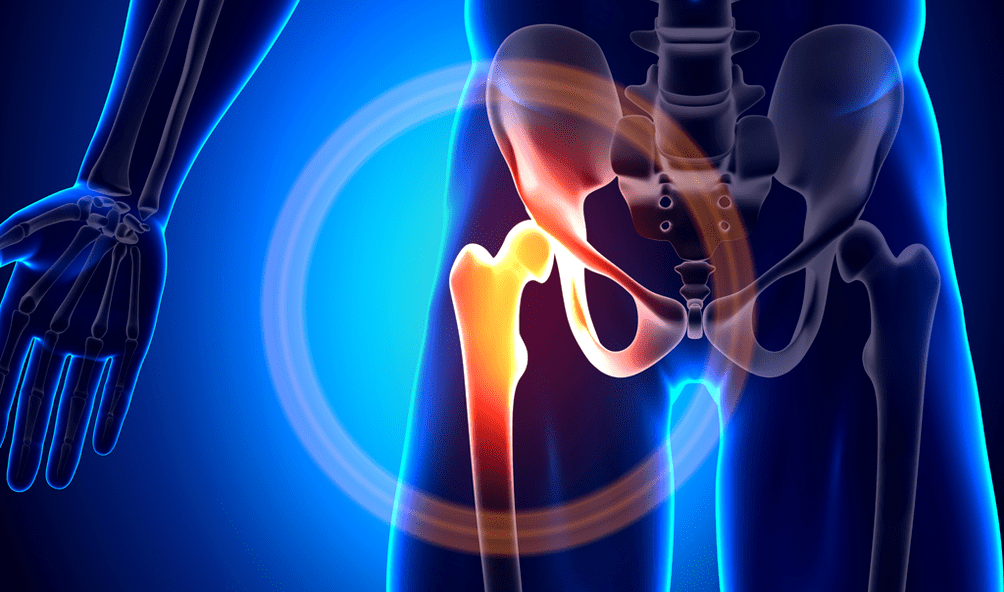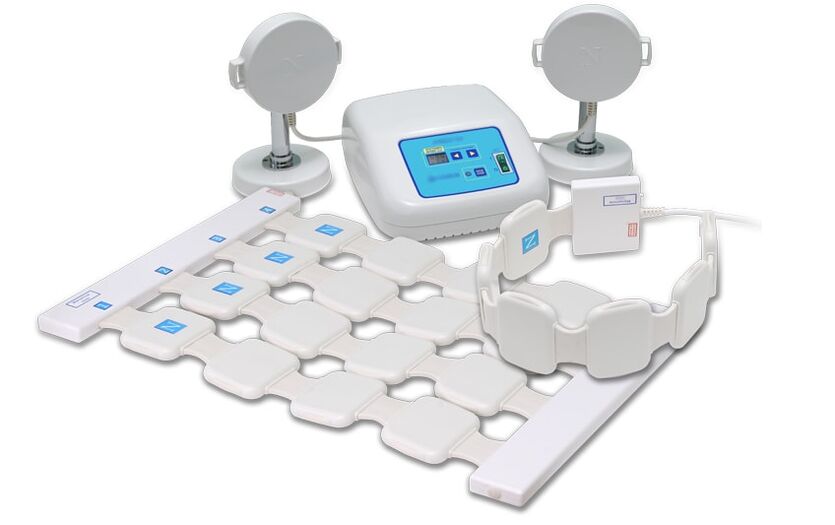What is this disease with such a complex name - coxarthrosis? This disease is a deforming arthrosis of the hip joint and is often called osteoarthritis of the thigh joint.
Currently, coxarthrosis is a leader among diseases of the musculoskeletal system, which are degenerative-dystrophic in nature. There are many causes of coxarthrosis, and due to this, the disease is widespread in all age groups.

Coxarthrosis refers to non-inflammatory osteoarthritis, in which primarily degenerative-dystrophic changes occur in the cartilage of the femur, smoothing the surfaces of the articular bones, and in the later stages, bone changes already occur. live. During such a progressive course of the disease with coxarthrosis, therefore, there is a violation of the natural normal functions of the affected hip joint, which in turn leads to dysfunction of the musculoskeletal system of the patient. all.
In most cases, osteoarthritis of the hip joint affects people over the age of forty. Of course, coxarthrosis, like other diseases, can be successfully treated without surgery, but only in its early stages. However, in the later stages, it is unlikely to be possible without surgery, and only one thing can help prevent disability - prosthetics of the joint affected by coxarthrosis. Unfortunately, people with coxarthrosis are reluctant to see a doctor in the early stages of the disease, ignoring minor pain in the thigh, and osteoarthritis of the thigh continues to progress day by day, getting worse. more sophisticated form.
How does coxarthrosis develop?
Let's look at the mechanism of development of coxarthrosis. Let's start with the fact that the hip joint consists of two bones:
- the tip of the ball-like femur itself;
- acetabulum resembling a small billiard pocket located in the iliac part of the pelvis;
- special articular cartilage on the surface of both bones, resembling a sponge-like substance and necessary as a shock absorber, compressed during movement and straightened in its absence;
- as well as the ligaments that form the cavity of the hip joint itself and thus form the joint capsule.
In addition, there is muscle tissue surrounding the joint, such as the thigh, gluteal and other muscles, the function of which also depends on the condition of the thigh joint.
During movement, when the articular cartilage is compressed, a special fluid is "squeezed" into the joint, which is a kind of lubricant for the bones that play in the joint. In addition, the articular cartilage itself, in addition to being an excellent shock absorber during movements, performs the function of evenly distributing loads on the surface of the joint.
The occurrence of coxarthrosis is primarily associated with malnutrition of the cartilage of the hip joint. The cartilage becomes thinner and then disappears in some places. If no action is taken to stop this process, the bone itself will grow directly at the site of the cartilage atrophy described above, thus trying to "fill" the gap in the joint space. As a result of such bone changes, osteophytes, that is, "spikes" in the bone, begin to appear. These deformations, in turn, lead to a violation of the compatibility of the bones that play in the thigh joint, and then "wear out" the remaining healthy parts of the articular cartilage.
Causes of osteoarthritis of the hip joint
The causes of coxarthrosis can be divided into secondary as a result of primary and other diseases of unknown etiology, for example:
- congenital hip dislocation;
- hip dysplasia;
- aseptic necrosis of the femoral head itself;
- various injuries in the past, such as a fracture of the femoral neck;
- Perthes disease;
- inflammatory processes in the hip joint;
Since coxarthrosis occurs not only in one but also in both hip and pelvic joints, it is quite possible to claim that bilateral coxarthrosis is not uncommon. Primary coxarthrosis often affects the knee joint or spine.
Symptoms of coxarthrosis
The first symptoms of coxarthrosis directly depend on the degree of damage to the hip joint, as well as the stage of development of the disease, and the main ones are:
- pain in the hip joint during movement, which manifests itself and disappears at rest;
- resulting disability;
- stiffness in the hip joint;
- downward movement in the range of motion of the hip;
- weakness of the femoral muscles and a significant decrease in their volume.
Separately, we consider the symptoms of coxarthrosis, depending on the degree of disease with this disease:
- Symptoms of coxarthrosis grade 1: There is moderate pain in the hip joint and only after prolonged intensive loading of the joint. After taking the load and resting, this syndrome completely stops. With the first degree of symptoms of coxarthrosis, gait remains normal and the range of motion of the joint does not change.
- Symptoms of grade 2 coxarthrosis: Pain in the hip joint is already felt more strongly than in the first degree, but in addition, they are projected into the inguinal region. Given the developing muscle atrophy, the knee also begins to ache, and often more than the ilio-femoral joint itself. Sometimes the symptoms of secondary coxarthrosis begin to appear even at rest, and a sufficiently long rest is required to relieve it after the load has been transferred to the affected joint. When running or walking for a long time, lameness begins to appear. At the same time, the strength of the thigh muscles is significantly reduced, and the range of motion of the joint is underestimated.
- Symptoms of grade 3 coxarthrosis: persistent pain in the thigh joint that does not last even after a long rest or constant rest. The pain has already affected the whole leg. Against the background of pain, the patient develops insomnia and various sleep disorders. There is a strong atrophy of the muscles of the thigh, hip and lower leg, the motor volume of the joint is almost minimal. During the walk, the patient is forced to resort to aids, such as a cane, to move.
If such arthrosis of the femoral joint develops only in the femoral-pelvic joint of one foot, its weakened thigh muscles stimulate the development of lateral displacement of the pelvis, resulting in the length of the leg with the joint. coxarthrosis decreases.
Diagnosis of coxarthrosis
When coxarthrosis is diagnosed, the symptoms of coxarthrosis described above must be taken into account, along with information from the patient's X-ray examination. This method allows to determine not only the degree of coxarthrosis, but also the causes that play a catalytic role in the development of coxarthrosis. Radiography is an excellent opportunity to identify changes in the hip joint that are specifically damaged, which is directly related to the mechanism of development of coxarthrosis.
In addition to the diagnostic methods already listed, computed tomography and magnetic resonance imaging techniques can be used, which allow a comprehensive study of developing pathology, such as the structure of bone tissue, the structure of deformed bone tissue. is a companion of this disease. As for magnetic resonance imaging, this method still allows to assess the pathological disorders of the soft tissues surrounding the joint affected by coxarthrosis.
Treatment of coxarthrosis
The choice of treatment for coxarthrosis directly depends on the symptoms of coxarthrosis and its stage. The first and second degrees of coxarthrosis are usually treated with traditional conservative medications, including chondroprotectors, vasodilators, and muscle relaxants, if indicated. Non-steroidal anti-inflammatory drugs are also used when coxarthrosis is particularly acute. It should be borne in mind that such treatment should be carried out by a specialist, because self-medication, unlike traditional medicine, can have an extremely negative effect on the patient's internal organs and completely suppress the ability of hyaline cartilage to recover.

Also, various physiotherapeutic procedures and exercise therapy are prescribed for coxarthrosis. Particularly effective is the use of magnetotherapy in the treatment of osteoarthritis using a special device, in combination with traditional drug treatment of coxarthrosis.
The effect of diet on the body of a patient with coxarthrosis does not have a direct therapeutic effect, but for obese people it is recommended to reduce body weight, as it allows to reduce the load on the affected joint and thus relieve pain. acute symptoms of coxarthrosis.
With coxarthrosis, the most painful of the symptoms, the third degree of the disease is treated only with surgery, such as hip arthroplasty. Statistics show that in 95% of cases after surgery, the absolute restoration of the function of a joint with deforming arthrosis of the hip joint is achieved, which allows you to lead a fairly active lifestyle.
The service life of such a prosthesis is about 15-20 years, but after the end of the service life, a second operation is needed to replace the outdated endoprosthesis.
Note,is important! Don't diagnose yourself!If signs of coxarthrosis appear, you should consult an orthopedic doctor, because only a qualified specialist can correctly diagnose and prescribe the most optimal treatment.
Prevention of coxarthrosis
Coxarthrosis can be avoided if the necessary prevention of coxarthrosis is carried out:
- compulsory and timely treatment of inflammatory joint diseases;
- timely treatment of joint dysplasia;
- compulsory proper and reasonable physical activity, especially weight training;
- mandatory control of your body weight, keeping it normal;
- prevention of joint injuries.
































